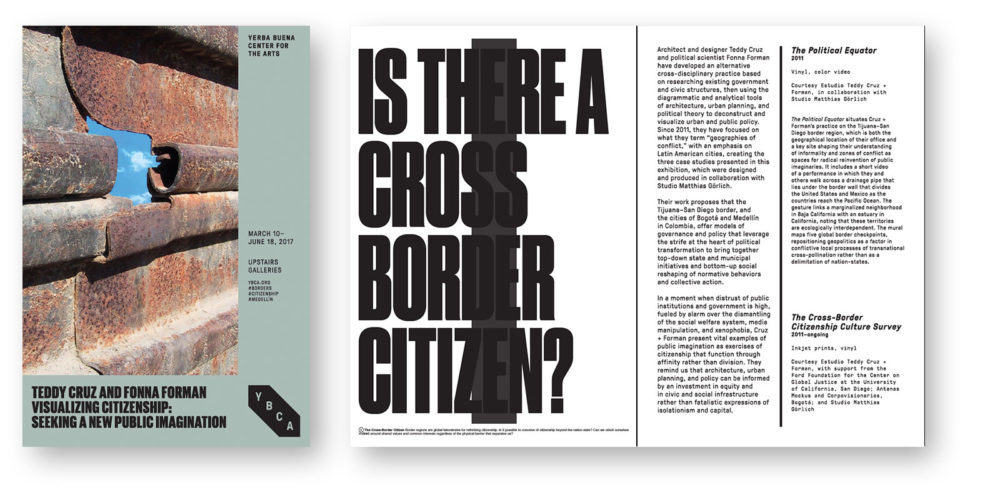“The Mexico-US border is a geography of conflict from which a more inclusive political vision can be shaped, based on integration and cooperation, not division and xenophobia.”
– Teddy Cruz and Fonna Forman
In the face of a new, more divisive, political landscape, the public narrative around borders surfaces fears on all sides of the political spectrum. Yet for architect and theorist Teddy Cruz and political scientist Fonna Forman, border communities are opportunities for civic and political creativity, rather than criminalization. These sites, to which they refer as “geographies of conflict,” are the basis of three projects that present case studies for more expansive and inclusive ways of thinking of the relationships between the United States and its neighbors, and more broadly propose that citizenship is organized around shared values and common interests, and not on the action of an isolationist nation with a homogeneous identity.
Composed of videos, diagrams, maps, and visual narratives designed in collaboration with Studio Matthias Görlich, the exhibition presents The Political Equator (2011), a video and wall diagram that captures a collective border-crossing performance through a drainage pipe joining two marginalized neighborhoods along the border wall that divides an informal settlement in Mexico from a natural estuary in California. Produced for this exhibition, a series of posters synthesize their work on the Cross-Border Citizenship Culture Survey (2011-ongoing), the result of a collaboration with Antanas Mockus, the former mayor of Bogotá, Colombia; his think tank, Corpovisionarios; and city officials in San Diego and Tijuana. Also featured is The Medellín Diagram (2012-ongoing), which presents a new political and civic model for creating public spaces that facilitate cultural, political, and knowledge exchange based on the example of the city of Medellín and its extraordinary social and urban transformation.







